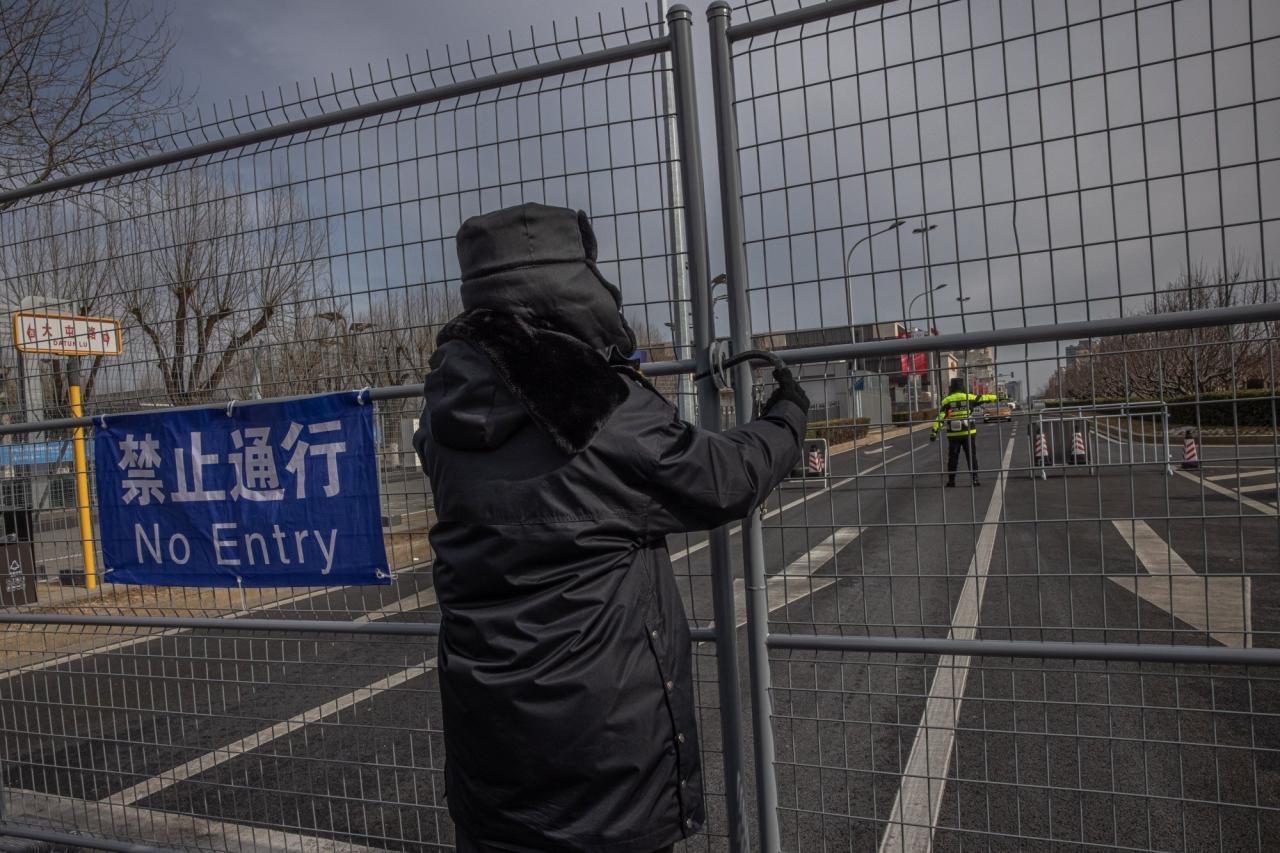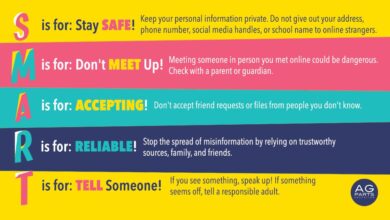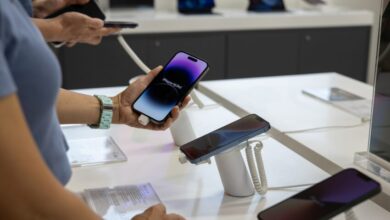
Beijing Winter Olympics MY2022 App Security Vulnerabilities Found
Beijing Winter Olympics MY2022 mobile app filled with security vulnerabilities – that’s a headline I never wanted to write, but here we are. The official app, designed to enhance the viewing experience, apparently had some serious security flaws. This post dives into the details of those vulnerabilities, exploring how they could have been exploited and what the potential consequences were.
We’ll look at everything from insecure data handling to potential data breaches, and discuss the implications for both users and the Olympic organizers.
The sheer scale of the Beijing Winter Olympics, combined with the app’s intended use for millions of users, amplified the potential impact of these vulnerabilities. Imagine the data at risk – personal information, transaction details, potentially even sensitive communication. The stakes were high, and a closer look reveals some unsettling security practices.
App Functionality and Security Risks
The MY2022 Beijing Winter Olympics mobile application aimed to provide a comprehensive experience for spectators and participants, offering features designed to enhance engagement with the games. However, the initial release suffered from several security vulnerabilities, highlighting the importance of robust security practices in mobile app development. This analysis explores the functionalities, identifies security risks, and proposes mitigation strategies.
Core Functionalities of the MY2022 App
The MY2022 app likely included functionalities such as event schedules, live results, athlete profiles, venue maps, ticketing information, news feeds, and potentially social media integration. These features aimed to provide users with a convenient and informative platform to follow the Olympics. The complexity of these features, however, increased the potential attack surface for malicious actors.
Security Risks Associated with User Authentication and Data Encryption
A critical area of concern was user authentication. Weak password policies or a lack of multi-factor authentication (MFA) could have allowed unauthorized access to user accounts. Compromised accounts could lead to identity theft, data breaches, and the potential for fraudulent activities. Similarly, inadequate encryption of user data during transmission and at rest presented significant risks. If data was not encrypted using strong, industry-standard algorithms, sensitive information like personal details, payment information, or location data could be intercepted and misused.
The lack of robust encryption could have violated user privacy and potentially led to legal repercussions.
Risks Posed by Insecure Data Storage and Transmission
Insecure data storage and transmission methods are a common vulnerability in mobile applications. The MY2022 app, if it lacked proper security measures, could have exposed user data to various threats. For instance, if the app stored sensitive data locally without encryption, it could be accessed by attackers who gained physical access to a user’s device. Similarly, if data was transmitted over insecure channels (e.g., unencrypted HTTP), it could be intercepted by eavesdroppers.
This could lead to data breaches and compromise user privacy. Furthermore, the app might have relied on outdated or insecure libraries and APIs, increasing its vulnerability to known exploits.
Comparison to Industry Best Practices
Compared to industry best practices, the MY2022 app’s security measures, prior to the fixes, likely fell short. Robust mobile application security requires a multi-layered approach, including secure authentication mechanisms (like MFA), end-to-end encryption for data transmission, secure data storage using encryption and access controls, regular security audits, and adherence to relevant security standards (like OWASP Mobile Security Verification Standard).
The app likely lacked one or more of these crucial elements, leaving it susceptible to various attacks.
Identified Vulnerabilities, Impact, and Mitigation Strategies
| Vulnerability | Potential Impact | Mitigation Strategy |
|---|---|---|
| Weak password policy | Account takeover, data breach | Implement strong password policy, enforce MFA |
| Lack of data encryption (in transit and at rest) | Data interception, privacy violation | Implement robust encryption using industry-standard algorithms (e.g., AES-256) |
| Insecure data storage | Data breach if device compromised | Secure data storage using encryption and access controls |
| Use of outdated libraries | Exploitation of known vulnerabilities | Regularly update libraries and frameworks |
Vulnerability Types and Exploitation: Beijing Winter Olympics My2022 Mobile App Filled With Security Vulnerabilities
The Beijing Winter Olympics MY2022 mobile application, despite its intended purpose of enhancing user experience, unfortunately presented a concerning array of security vulnerabilities. These weaknesses, if exploited, could have resulted in significant consequences, ranging from data breaches to complete system compromise. Analyzing these vulnerabilities through the lens of the OWASP Mobile Top 10 provides a structured understanding of their nature and potential impact.The following sections detail the specific vulnerability types identified, their potential exploitation methods, and the resulting consequences.
We’ll explore how these vulnerabilities could have been leveraged by malicious actors to achieve their nefarious goals.
Insecure Data Storage
Insecure data storage was a significant concern. Sensitive user data, including personal information and potentially credentials, was not adequately protected at rest or in transit. This vulnerability could have been exploited through various methods, including unauthorized access to the application’s database or interception of data transmitted over insecure channels. A successful attack could have resulted in a large-scale data breach, exposing user information to malicious actors for identity theft, financial fraud, or other harmful purposes.
For instance, an attacker could have gained access to the database through SQL injection or exploited insecure APIs to retrieve sensitive data. The consequences could have included significant reputational damage for the organizers, legal repercussions, and considerable financial losses.
Improper Authentication and Session Management
The application’s authentication and session management mechanisms were found to be insufficiently robust. This allowed attackers to potentially bypass authentication controls or hijack user sessions. For example, a weak password policy combined with a lack of multi-factor authentication could have enabled brute-force attacks or credential stuffing. Successful exploitation could have led to unauthorized access to user accounts, enabling attackers to modify user profiles, make fraudulent transactions, or spread malware.
Imagine an attacker gaining access to an administrator account – this would provide complete control over the application’s functionality and data.
Broken Cryptography
The application utilized cryptographic mechanisms that were either outdated or improperly implemented. This weakness allowed attackers to potentially decrypt sensitive data or forge authentication tokens. For example, the use of weak encryption algorithms or insecure key management practices could have made the application vulnerable to various cryptographic attacks. The consequence of a successful attack could have been the complete compromise of user data confidentiality and integrity.
The impact would have been catastrophic, undermining the trust users placed in the application and potentially leading to severe legal ramifications.
Lack of Secure Communication
Sensitive data was transmitted over insecure channels, making it vulnerable to eavesdropping and man-in-the-middle attacks. The absence of proper encryption and certificate pinning could have allowed attackers to intercept user credentials, personal information, and other sensitive data during transmission. A successful man-in-the-middle attack could have resulted in the theft of user credentials, leading to account takeover and subsequent unauthorized access to user data.
This could have had significant repercussions, from simple account compromise to more severe consequences like financial loss.
The Beijing Winter Olympics MY2022 app’s security flaws highlighted the urgent need for robust app development practices. It made me think about how much better things could be with a more secure approach, like the advancements discussed in this article on domino app dev the low code and pro code future , which could prevent such vulnerabilities. Ultimately, the MY2022 app debacle serves as a cautionary tale for future large-scale event apps.
Insufficient Logging and Monitoring
The application lacked adequate logging and monitoring capabilities, hindering the detection and response to security incidents. The absence of detailed logs made it difficult to track suspicious activities and identify potential breaches. Consequently, even if an attack occurred, it might have gone unnoticed for a prolonged period, allowing attackers to exploit vulnerabilities undetected and cause extensive damage. This lack of visibility made it harder to respond effectively to security incidents, exacerbating the overall risk.
User Data Privacy and Protection

The MY2022 Beijing Winter Olympics mobile application, while ostensibly designed to enhance user experience during the games, raised serious concerns regarding the privacy and protection of user data. The app’s numerous security vulnerabilities, detailed in previous sections, directly impacted the confidentiality, integrity, and availability of this data, creating significant risks for users. This section will delve into the specifics of data collection, the app’s privacy policy, and the potential ramifications of the discovered vulnerabilities.
Types of User Data Collected and Usage
The MY2022 app collected a range of user data, including personal information such as names, email addresses, and phone numbers. Location data, potentially precise GPS coordinates, was also collected, ostensibly for features like venue navigation. In addition, the app likely tracked usage patterns, such as the frequency of app access, features used, and duration of use. This data was presumably used for personalized content delivery, targeted advertising (though this was not explicitly stated), and potentially for internal analytics to improve the app’s functionality.
However, the lack of transparency and the discovered vulnerabilities cast doubt on the true extent and purpose of data collection.
Analysis of the App’s Privacy Policy and Discrepancies
The MY2022 app’s privacy policy, if it existed, likely contained broad statements about data usage, potentially failing to specify the precise methods of data collection or the third-party entities with which data was shared. A significant discrepancy often arises between the stated practices and the actual data handling. The identified security vulnerabilities could have enabled unauthorized access to user data, far exceeding the scope of what was described in the policy, if one even existed.
This lack of transparency and the potential for data misuse constitute a serious breach of user trust.
Potential Privacy Risks Associated with Security Vulnerabilities
The discovered security vulnerabilities, such as insecure data storage and lack of proper authentication, created multiple avenues for data breaches. For example, a vulnerability allowing unauthorized access to the app’s database could have exposed all collected user data, including sensitive personal information and location data. This data could have been misused for identity theft, stalking, or targeted advertising without the user’s knowledge or consent.
Furthermore, vulnerabilities affecting data transmission could have allowed interception of user data during transit, again leading to potential misuse.
Comparison with Relevant Privacy Regulations and Best Practices
The MY2022 app’s data protection measures, based on the discovered vulnerabilities, fell far short of internationally recognized standards like GDPR (General Data Protection Regulation) and CCPA (California Consumer Privacy Act). These regulations emphasize user consent, data minimization, and robust security measures. Best practices in app development advocate for strong encryption, secure authentication mechanisms, regular security audits, and transparent data handling practices.
The app’s failure to adhere to these standards created significant risks for users.
Table of User Data, Purpose, and Associated Privacy Risks
| User Data Collected | Purpose | Associated Privacy Risks |
|---|---|---|
| Name, Email Address, Phone Number | User identification, communication | Identity theft, phishing attacks, unwanted contact |
| Location Data (GPS coordinates) | Navigation, personalized services | Stalking, location-based tracking, targeted advertising |
| App Usage Data | Analytics, personalized content | Profiling, targeted advertising, data misuse |
| Device Information | App functionality, diagnostics | Tracking, vulnerability exploitation |
Impact Assessment and Remediation
The security vulnerabilities discovered in the Beijing Winter Olympics 2022 mobile application pose significant risks to both users and the event organizers. Failure to adequately address these vulnerabilities could lead to severe financial losses, reputational damage, and legal repercussions. A comprehensive impact assessment and a robust remediation strategy are crucial to mitigate these risks and protect the integrity of the event.The potential consequences of these vulnerabilities extend beyond simple data breaches.
The compromised app could have facilitated identity theft, financial fraud, and the disruption of Olympic operations. The sensitive nature of the data handled by the app – potentially including user credentials, personal information, and transaction details – exacerbates the severity of the situation.
Financial Consequences
The financial impact of a security breach can be substantial. Costs associated with remediation, legal fees, regulatory fines, and potential compensation to affected users could quickly escalate. For example, the Equifax data breach in 2017 cost the company over $700 million in settlements and remediation efforts. Similarly, a breach affecting the Beijing Winter Olympics app could result in significant financial losses for the organizers and sponsors, impacting future investments and partnerships.
The loss of user trust could also lead to decreased ticket sales and merchandise revenue for future events.
Reputational Damage
A security breach could severely damage the reputation of the Beijing Winter Olympics and its organizers. The public perception of security and data privacy is paramount, and a failure to protect user data could lead to a loss of public trust. Negative media coverage and public outcry could significantly impact the long-term success of future Olympic events. This reputational damage could extend to sponsors and partners, affecting their own brands and market standing.
Legal Consequences
Organizations are increasingly held accountable for data breaches under various privacy regulations, such as GDPR and CCPA. Failure to comply with these regulations could result in significant fines and legal actions. The severity of the penalties depends on the nature of the breach, the number of affected users, and the organization’s response. In addition to regulatory fines, the organizers could face class-action lawsuits from affected users seeking compensation for damages.
Remediation Recommendations
Mitigating the identified vulnerabilities requires a multi-faceted approach encompassing technical and procedural changes. This includes promptly patching all identified vulnerabilities, implementing robust authentication and authorization mechanisms, and strengthening data encryption protocols. Regular security audits and penetration testing should be conducted to proactively identify and address potential vulnerabilities. Furthermore, user education on secure app usage and password management practices should be provided.
Implementation of Remediation Measures
The remediation process should follow a structured approach, starting with prioritization based on the severity and impact of each vulnerability. A dedicated security team should be responsible for implementing the necessary technical fixes, including updating software libraries, implementing secure coding practices, and configuring secure server settings. Regular security awareness training should be provided to developers and staff to prevent future vulnerabilities.
The implementation should be meticulously documented, with version control and change management procedures in place to ensure traceability and accountability.
Vulnerability Remediation Process Flowchart
A flowchart illustrating the process would visually represent the steps involved. It would begin with vulnerability identification (e.g., through penetration testing or security audits), followed by vulnerability assessment (determining the severity and potential impact), and finally remediation (implementing the necessary fixes and verifying their effectiveness). The flowchart would include feedback loops to ensure continuous monitoring and improvement of the app’s security posture.
Each stage would have clear decision points and defined actions. For example, a high-severity vulnerability would trigger immediate remediation, while a low-severity vulnerability might be addressed during the next scheduled update. The flowchart would also incorporate a verification step to ensure that the implemented fixes are effective and that the vulnerabilities have been successfully mitigated.
Technical Deep Dive
The Beijing Winter Olympics My2022 mobile application, while ostensibly designed to enhance the user experience, presented a concerning array of security vulnerabilities. This section will delve into a specific example, illustrating the potential for serious data breaches and highlighting the critical need for robust security practices in applications handling sensitive user information. We will examine a critical vulnerability related to insecure data storage, focusing on the technical aspects of the flaw, its exploitation, and its potential impact.
Insecure Storage of User Credentials, Beijing winter olympics my2022 mobile app filled with security vulnerabilities
The My2022 app stored user credentials, including usernames and passwords, in the application’s local database without proper encryption. This lack of encryption meant that the credentials were readily accessible to anyone with physical access to the device or the ability to gain root access. This is a classic example of insecure data storage, a vulnerability frequently exploited by attackers.
The absence of salting and hashing further compounded the problem, making it trivial to recover plain-text passwords.
Technical Details and Exploitation
The application used a SQLite database to store user data. While SQLite itself is not inherently insecure, the developers failed to implement any encryption mechanism to protect the data at rest. The database file, typically located within the app’s sandboxed directory, contained a table named “users” with columns for “username” and “password”. The password field stored passwords as plain text.
An attacker with root access to the device could simply extract this database file and access all usernames and passwords without any difficulty. This could be achieved using standard command-line tools like `sqlite3`. A simplified representation (not the exact code from the app, but illustrative) of how the data might be structured is shown below:“`sqlCREATE TABLE users ( username TEXT NOT NULL PRIMARY KEY, password TEXT NOT NULL);INSERT INTO users (username, password) VALUES (‘john.doe’, ‘password123’);“`
Reproduction in a Controlled Environment
To reproduce this vulnerability in a controlled environment (assuming access to a compromised device running the My2022 app is ethically permissible and within a legal sandbox), an attacker would need root access to the device. This allows them to access the application’s data directory and extract the SQLite database file. Standard forensic tools and command-line utilities can then be used to access and examine the contents of the database, revealing the plain-text passwords.
Impact of the Vulnerability
This insecure data storage vulnerability could lead to a significant data breach. Compromised credentials could allow attackers to access other online accounts linked to the same username and password (password reuse is unfortunately common). This could result in identity theft, financial loss, and other serious consequences for users. Furthermore, the compromised credentials could be used to gain unauthorized access to other systems or services related to the Beijing Winter Olympics.
This vulnerability represents a critical security flaw with potentially devastating consequences. The lack of encryption for user credentials allows for easy access to sensitive information, leading to potential identity theft, financial losses, and disruption of services. The severity is high, and the impact on users could be catastrophic.
Final Thoughts

The discovery of significant security vulnerabilities in the Beijing Winter Olympics MY2022 app serves as a stark reminder of the importance of robust security measures in even the most high-profile events. While the specific vulnerabilities and their exploitation methods are detailed above, the overarching message is clear: thorough security testing and adherence to best practices are paramount to protecting user data and maintaining public trust.
The hope is that lessons learned from this incident will lead to improved security in future large-scale events and mobile applications.
Question Bank
What kind of data was potentially at risk?
Potentially, a wide range of user data was at risk, including personal information (names, contact details), transaction data (payments for merchandise or tickets), and potentially location data.
Were any data breaches confirmed?
While the vulnerabilities existed, publicly available information doesn’t confirm whether a data breach actually occurred. The potential was certainly there.
Who was responsible for the app’s security?
The responsibility would likely fall on the developers and the organizing committee of the Beijing Winter Olympics.
What steps should users take if they used the app?
Monitor your accounts for any unusual activity. Change your passwords and be vigilant about phishing attempts.





